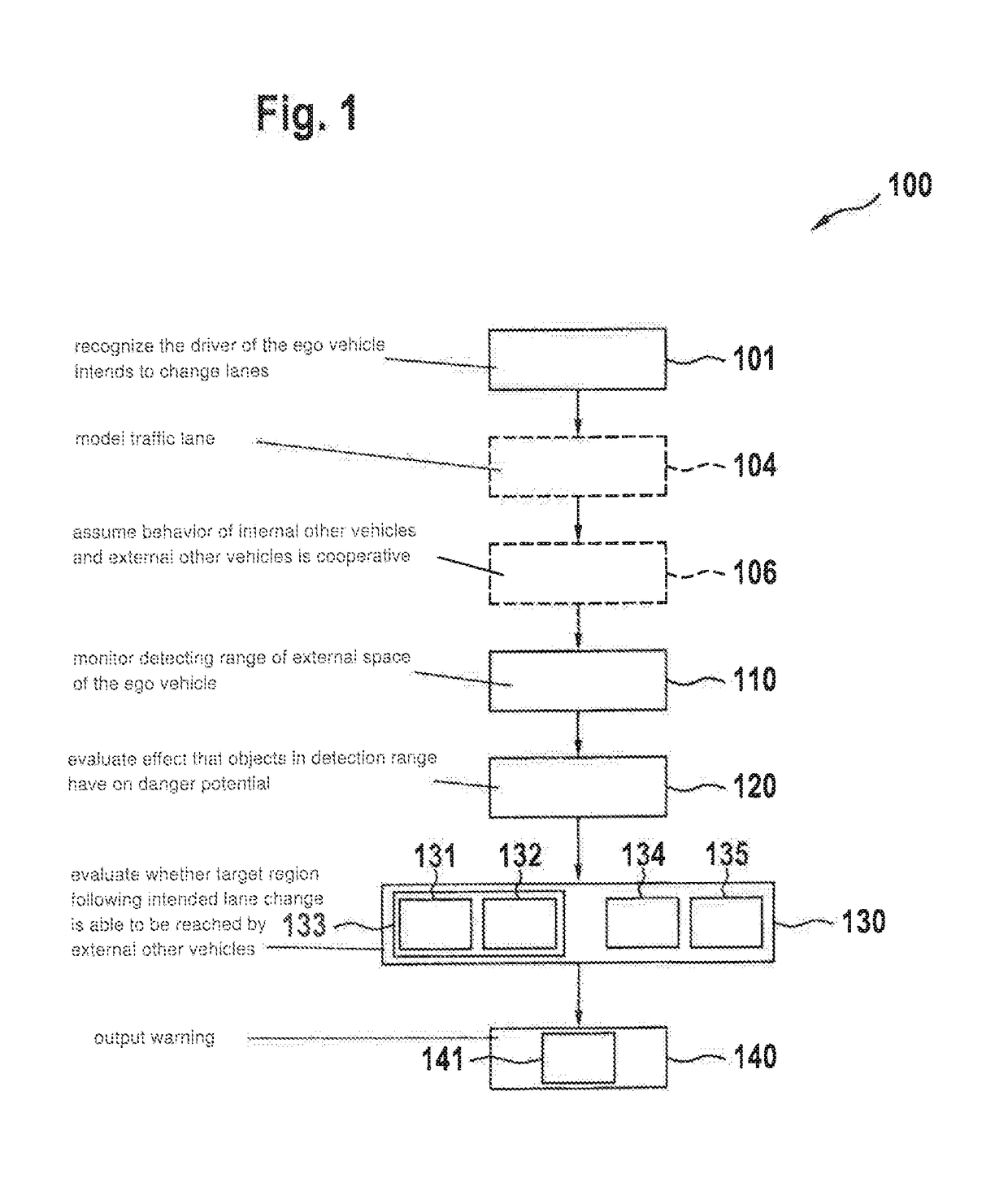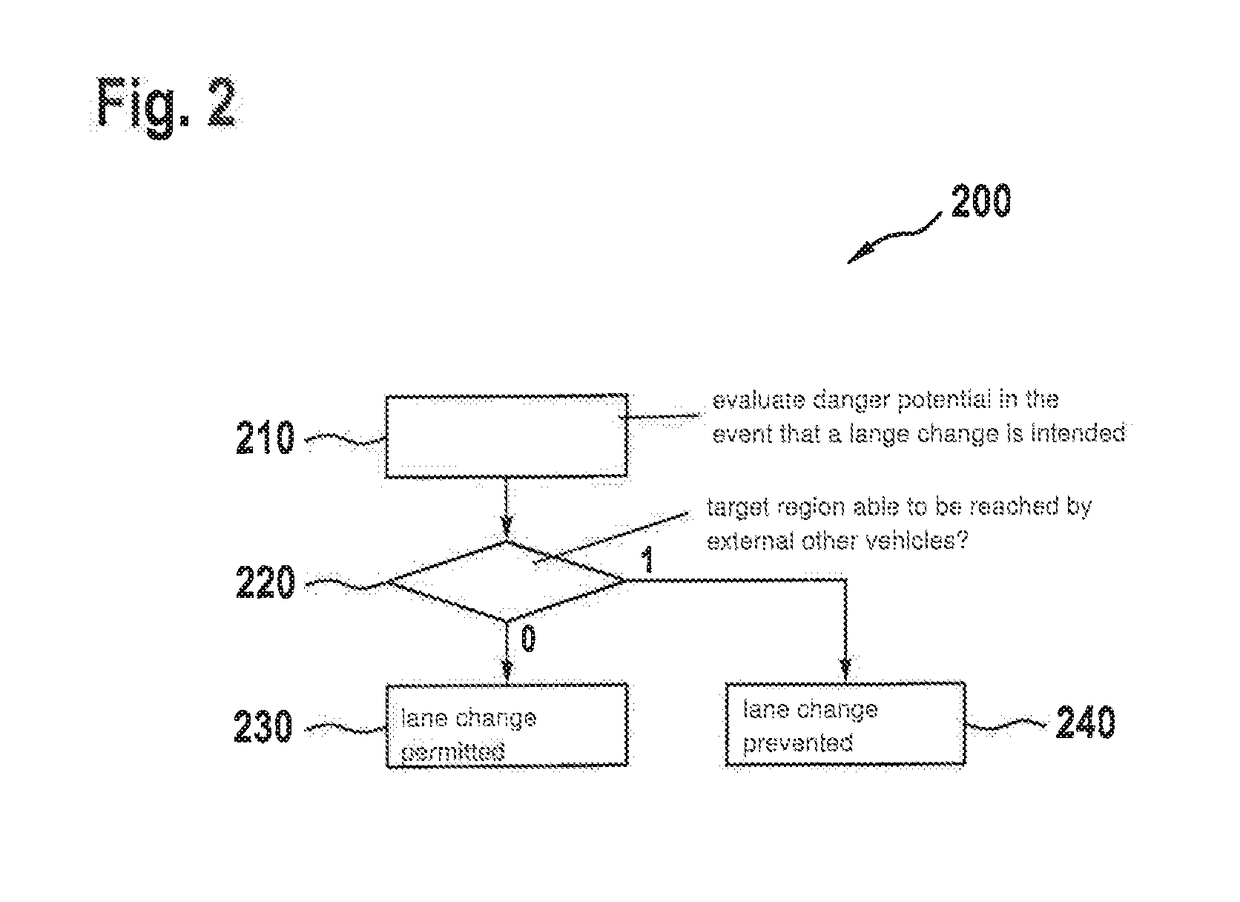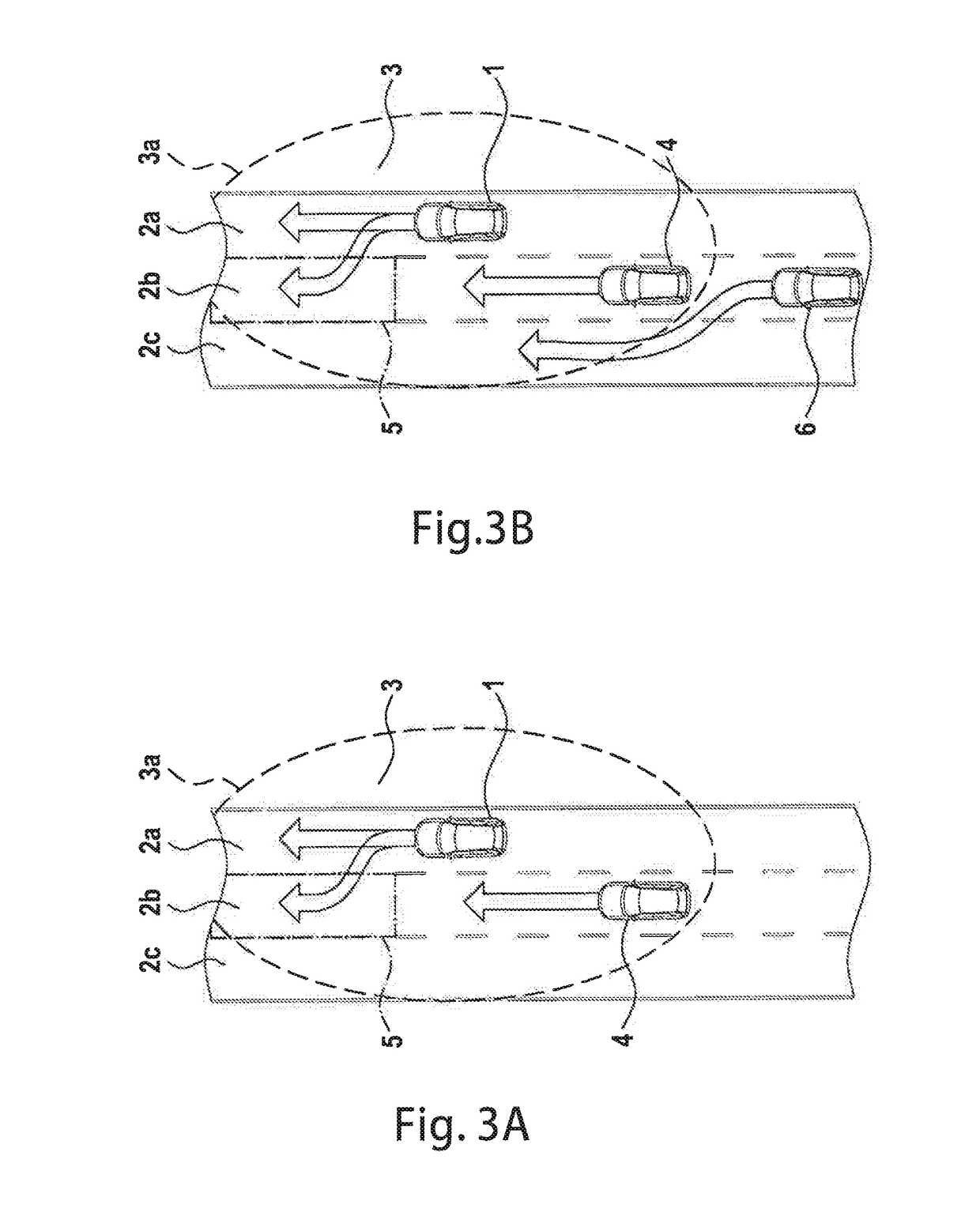Danger detection in an intended lane change
a technology for detecting dangers and intended changes, applied in the direction of scene recognition, process and machine control, instruments, etc., can solve the problems of sudden force to slam on the brakes, dangerous situations, and underestimated differences in speed between the current used traffic lane and the traffic lane to which a change is intended, and achieve the effect of saving processing tim
- Summary
- Abstract
- Description
- Claims
- Application Information
AI Technical Summary
Benefits of technology
Problems solved by technology
Method used
Image
Examples
Embodiment Construction
[0036]The exemplary embodiment of method 100 shown in FIG. 1 is used for assisting a human driver, and thus begins in step 101 with the recognition that the driver of ego vehicle 1 intends to change lanes. This step 101 is omitted in the case of an autonomously driving ego vehicle 1 or a vehicle that is driving in an at least partially automated manner.
[0037]Optionally, traffic lane 2a-2c is modeled as a graph 7 in step 104. Also optionally, in step 106 the assumption is made that the behavior of internal other vehicles 4 and external other vehicles 6 is cooperative.
[0038]In step 110, detection range 3 in the external space of ego vehicle 1 is monitored. In step 120, the effect that objects 4 detected in detection range 3 have on the danger potential is evaluated.
[0039]In step 130, it is then evaluated in accordance with a predefined system of rules, on the basis of positions and speeds of internal other vehicles 4 detected in detection range 3, whether target region 5 in which ego ...
PUM
 Login to View More
Login to View More Abstract
Description
Claims
Application Information
 Login to View More
Login to View More - R&D
- Intellectual Property
- Life Sciences
- Materials
- Tech Scout
- Unparalleled Data Quality
- Higher Quality Content
- 60% Fewer Hallucinations
Browse by: Latest US Patents, China's latest patents, Technical Efficacy Thesaurus, Application Domain, Technology Topic, Popular Technical Reports.
© 2025 PatSnap. All rights reserved.Legal|Privacy policy|Modern Slavery Act Transparency Statement|Sitemap|About US| Contact US: help@patsnap.com



